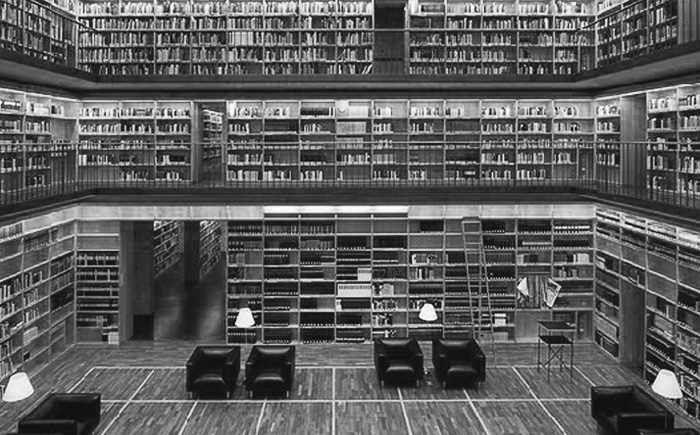
Apresentação Publicação do Programa de Pós-Graduação em Comunicação da UFRJ e que está aberta a contribuições de pesquisadores da área de Comunicação e afins, especialmente comprometidos com a compreensão das transformações e continuidades da vida sociocultural. Cada edição propõe um tema central a ser tratado na forma de um dossiê temático. Além disso, como o perfil da revista é geral, também é aceito o envio de textos sobre assuntos diversos (que podem ser publicados em outras seções da revista) e resenhas de livros lançados recentemente.
Próximas edições 2017 20.1 - Gilbert Simondon Há pouco mais de uma década, quando a lista dos nomes centrais da filosofia francesa do pós-guerra parecia fechada, surgiu Gilbert Simondon (1924-1989). Embora tenha sido reconhecido desde cedo como um importante filósofo da arte e exerceu considerável influência sobre seu colega Gilles Deleuze, Simondon foi redescoberto em todas as suas dimensões apenas alguns anos após sua morte. Seu pensamento original sobre a técnica e, sobretudo, sua complexa teoria da individuação, dialogando com questões do capital no mundo contemporâneo como a cibernética e a teoria da informação, foram recuperados quase que simultaneamente na França, Inglaterra e Estados Unidos, bem como na América Latina. Simondialização, um termo cunhado por Jean-Hugues Barthélémy e Vincent Bontems para se referir a uma globalização Simondoniana, é um dos fatos mais marcantes da cena filosófica contemporânea, particularmente no campo da comunicação, ao qual Simondon dedicou muitas de suas reflexões. Em sua próxima edição, a primeira de 2017, a revista ECO-Post se junta a esse processo e convida os inúmeros pesquisadores latino-americanos interessados ??em Simondon a enviar artigos que enfoquem esses temas (não exclusivos, apenas como uma espécie de guia): O pensamento da arte; Crítica filosófica e científica da cibernética; O lugar de informação e comunicação; Os projetos educacionais Simondonianos e sua relação com o enciclopedismo; A teoria da individuação; O problema da individuação psico-coletiva; Afetividade e emocionalidade na individuação psíquica coletiva; Individuação da vida e ciências da vida; A relação entre técnica e afeto; Leituras políticas contemporâneas em torno de Simondon; O legado Simondoniano na filosofia contemporânea.
Guest Editor: Pablo Esteban Rodriguez (University of Buenos Aires) Deadline for submissions: March 3, 2017
20.2 - Screenshots Our contemporary experience of time, mediated by images, seems subject to a double threat: crisis of the future and disappearance of the past. It happens amidst the ruins of the eternal present, omnipresent, time called, today, in the historiography, of "presentismo" (Hartog), in opposition to the futurism of Marinetti. We live in a continuous stream of fleeting images. If, with the emergence of social and digital media, the means of production and the platforms for the diffusion of images of the present day are socialized and diversified, on the other hand, the control of information and the processes of data storage becomes increasingly More concentrated. The ECO-Post Magazine invites the field of Communication to formulate issues at the border of this double phenomenon. With what aesthetic and political instruments, does the contemporary spectator take on the triple role of producer, archivist and editor of the images of his time? In a context marked by the multiplication of the means of production and access to images, how has the great media and, in particular, Brazilian television, historically positioned themselves? What relations between image and power are established in the present coxies? How does the treatment of images in social media give access to the different temporal layers of the more immediate facts? In the current production of images, what does it take to take an internal view of events? What has been retained and what is lost in terms of visual and sound records of recent events in Brazil and in the world? These are initial questions, which can be taken up in studies from various fields: television, the internet, the press, cinema, photography and the arts.
Guest editors: Anita Leandro (UFRJ) and Consuelo Lins (UFRJ) Deadline for submissions: May 19, 2017
20.3 - Urban communication We can consider the city from the various communication routes that cross it and produce it as a characteristically heterogeneous medium: streets, rails, roads, rivers and seas, cables, airspace. In these ways people, goods and information travel endlessly. As the historian Lewis Mumford shows from the outset, the urban fabric takes on consistency as a function of circulation. If, since the nineteenth century, this urban communication is increasingly performed in the network figure, today the communication and information technologies, especially with the advent of digital, in turn modify this reticular movement, producing forms of circulation, sociability and subjectivation in the Urban environments. This issue of the Revista ECO-Pós invites researchers to contribute works that, in the diversity of their methodologies and cutbacks, approach the urban phenomenon under a communication bias. Thus, following the directions that this construction is already assuming, we will welcome, for example, texts that address:
1. The modes of communicative organization in its relationship with the occupation of urban space, exploring the role of cinemas, television, computer communication and, more recently, mobile media and applications in the production of social life in cities and The incidences in the built space; The technological city or "smart city", mediation processes that characterize it and forms of urban management in this context, including the city-business, many times the stage of international mega-events.
2. Transport / traffic networks / circuits, focusing on face-to-face communication, the movement of people and messages in various modes and on the streets of cities, as well as the problem of surveillance cameras and mobility control.
3. Interferência estética / política no espaço da cidade - incluindo graffiti, graffiti, artes de intervenção, performances, publicidade - e outras construções semióticas, bem como a cidade reinventada em imagens em vários meios de comunicação. Cruzamento sensato de problemas e possibilidades, a cidade atrai e requer pensamentos / atividades diversos para a compreensão de sua importância na contemporaneidade.
Editora Convidada: Janice Caiafa (UFRJ) Prazo para inscrições: 31 de agosto de 2017
|